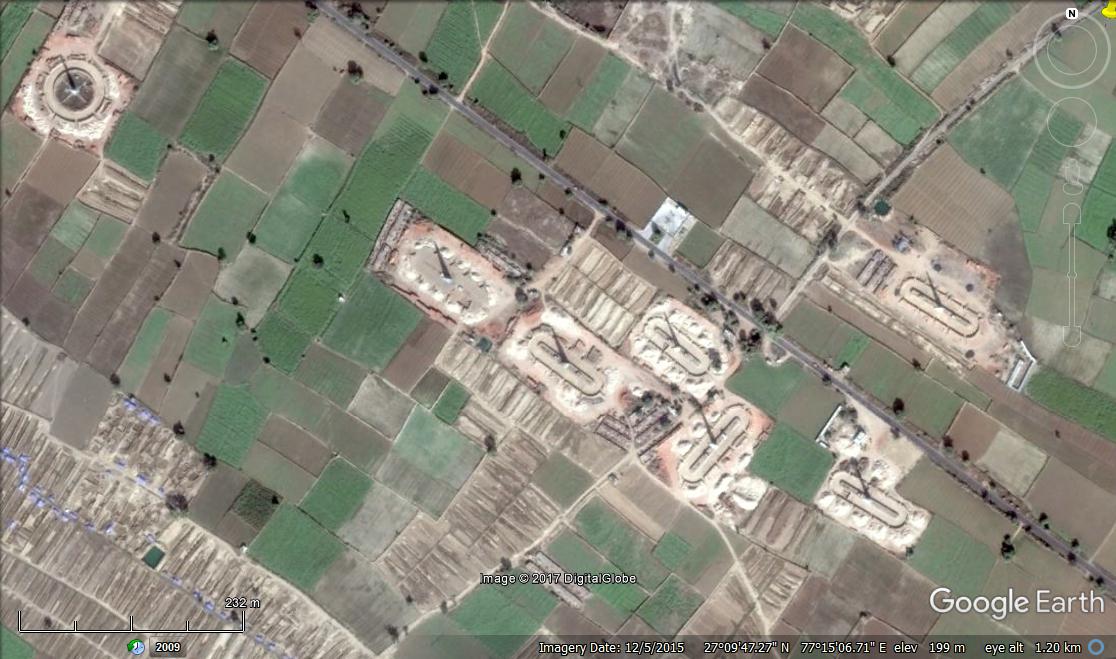When Jess Wardlaw began working with the Slavery from Space project, she was taken aback by just how prevalent slavery is in the modern world.

Slavery from Space is a project by the University of Nottingham’s Rights Lab that uses Google satellite images to identify signs of slavery in India, and pass that information onto local non-governmental organizations (NGOs) working on the ground and government officials. The Rights Lab is a wider initiative by the university to put an end to slavery around the world.
WATCH: 6,500 people in slavery in Canada, 45.8 million worldwide: Report

As a PhD student at the university, Wardlaw had been primarily interested in the project’s geospatial attributes. Before joining Slavery from Space, Wardlaw had just completed a term working with another research project where she helped develop 3D models of the surface of Mars.
Upon realizing that there are an estimated 45.8-million people enslaved around the world, according to the Global Slavery Index, she became completely engrossed in learning all she could about the issue.
“My interest was originally in the citizen science and geospatial aspect of the project, and the fact that I can do something with it that helps humanity is a complete bonus for me, and a privilege.”
The project, hosted on the people-powered research platform The Zooniverse, asks volunteers to participate in identifying brick kilns in Google satellite images through a section on the site. The Zooniverse is a platform where researchers can crowdsource data for projects from volunteers interested in scientific discoveries.
A brick kiln refers to a large type of oven where bricks are burned or baked, and are often sites of forced labour in South Asia. Nearly 70 per cent of over 5 million brick kiln workers in South Asia are estimated to be working in bonded and forced labour, according to a 2016 report by the International Labor Organization. Approximately one in five are underage.
According to the Global Slavery Index, there are currently more than 18-million slaves in India. Despite a 1976 ban on bonded labour in the country, the practice remains fairly widespread.

Get daily National news
“But there are other, more pressing challenges like tackling problematic practices including withheld wages, lack of transparent accounting… no enforcement of existing labour laws,” Jakub Sobik, spokesman at the London-based NGO Anti-Slavery told Reuters.
WATCH: SEE MORE GLOBAL COVERAGE OF MODERN SLAVERY BELOW
The brick industry employs millions of people across South Asia in extremely hazardous working conditions, particularly in India where the demand for infrastructure will continue to grow alongside the region’s swelling population.
This initiative was launched when Kevin Bales, a professor of contemporary slavery and now a research director with the Rights Lab, realized that because of their distinctive, circular nature, brick kilns could be identified from satellite images, which is why identifying them has been central to the project.
SCROLL THROUGH THE GALLERY BELOW TO SEE BRICK KILNS CIRCLED IN THE SATELLITE IMAGES
According to Wardlaw, once the Zooniverse project has gathered enough data, the next step is to determine how many brick kilns there are and pass the information onto NGOs working on the ground in India.
“Eventually, this is the beginning of a much bigger project that is going to see the volunteers marking clusters together so we will be able to map where the volunteers have said that there is a brick kiln so we can work with the NGOs and pass on that data,” Wardlaw explained.
The team is currently focused on an area of 2,600 square-km in the desert state of Rajasthan, and plans to scale up the project in the coming years. One way the team plans to do this is by introducing machine-learning attributes to speed up the process of identifying these brick kilns.
Wardlaw adds that while the team uses the data to assist operating NGOs, they will also “explore ways we can use volunteers’ data to train image analysis algorithms to find these signs of slavery on their own.”
“So there’s a machine-learning aspect to the project that we’ll be developing as… we get a decent set of volunteered data.”
Eventually, the team hopes that implementing machine-learning will provide a more accurate number of brick kilns so NGOs know where to direct their efforts to curb bonded labour.
Wardlaw said that while the project has made huge strides, the Slavery from Space team still has a long journey ahead as it looks towards the UN goal of exterminating global slavery by 2030. With over 45 million people still working in forced labour around the world, it’s a lofty ambition, but Wardlaw is taking it one day at a time.





























_848x480_1397405763961.jpg?h=360&w=540&crop=1&quality=70&strip=all)

Comments